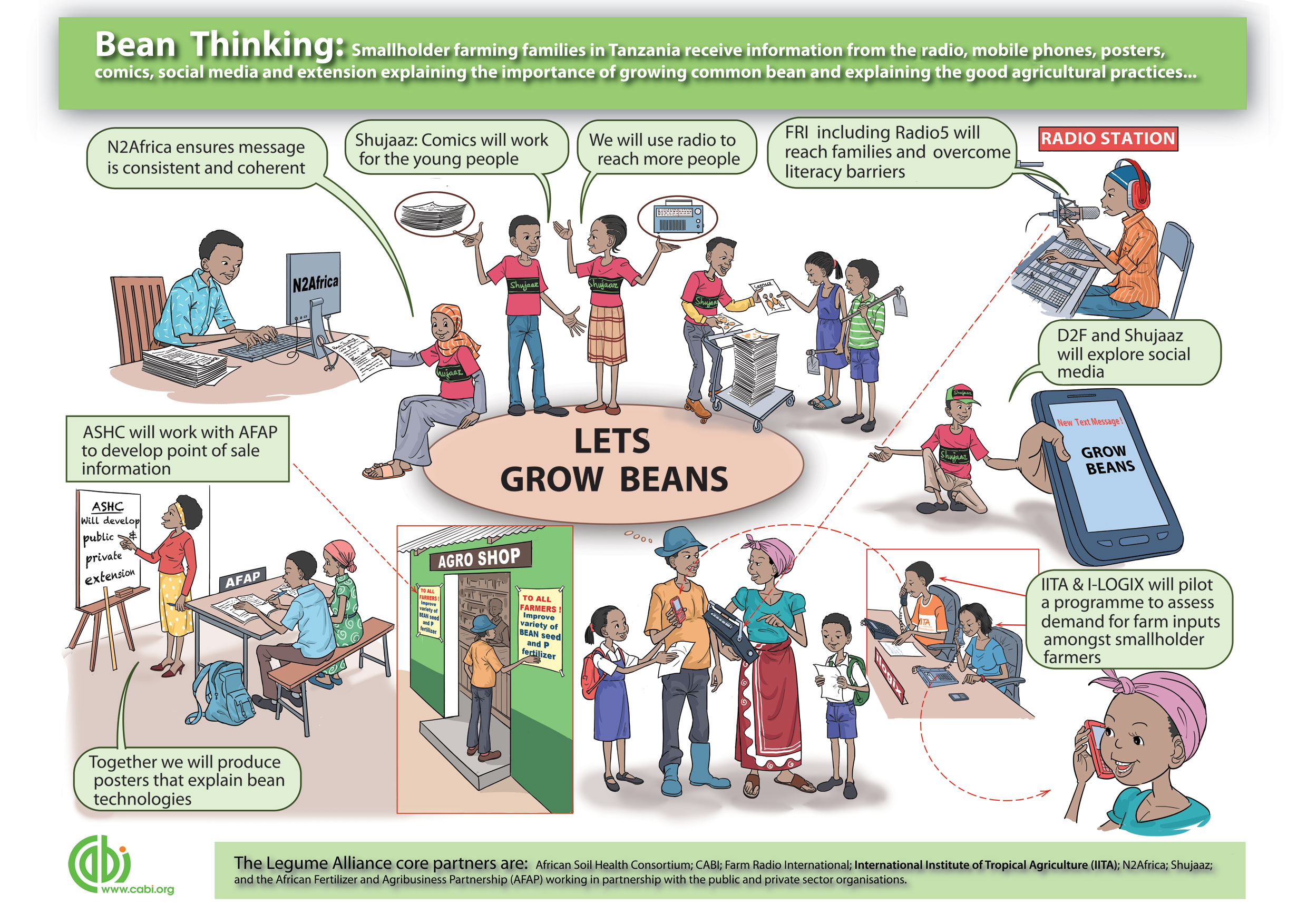The ASHC approach

ASHC was established in 2011 to address an identified need to improve the quality of information available to small-scale farmers in sub-Saharan Africa. In the first phase to 2015 the team ran a free consultancy service which sought to capacity build organisations. It used participatory processes to develop new development communications materials.
In phase 2 (2015-2019) ASHC has developed a new approach which involves delivering multi-agency (partnership) scale-up campaigns of proven agricultural technologies. Investment from the Bill & Melinda Gates Foundation enables ASHC to work in up to five priority countries: Ethiopia, Ghana, Nigeria, Tanzania & Uganda. Additional countries may be added to this list subject to successful fundraising approaches.
ASHC defines a multiple media scale-up campaign as the use of a variety of media (radio, mobile-mediated messages, social media/ICT, comics and youth media, posters, leaflets and point of sale materials in agro-dealerships) and interpersonal approaches (demonstration plots and training days) to deliver a common message or set of agronomic messages, so that the same information will be accessed by different members of the farming household. Often special attention is paid to media and approaches that deliver messages to women and young farmers (under the age of 35).
In some cases the scale-up campaign involves some intervention to make input supply chains function more effectively – by predicting and or stimulating demand or working to make supply chain and distribution networks function more effectively.
Partnerships delivering the scale-up campaigns are open and evolve over time, with new partners welcome to join scale-up initiatives or research programs, where there are mutual benefits. Once partnerships are established, the main elements of a campaign include the following:
- Develop a technology brief to guide messaging
- Assess farmer’s information needs, segmentation farmers (usually in terms of access to media), review presence of additional partners, availability of inputs etc.
- Develop and test prototype material(s)
- Pilot approaches (where possible)
- Deliver messages at scale
The technology brief will include a package of improved agricultural technologies from land preparation to post-harvest storage and nutrition – incorporating:
- Good agronomy including spacing, weeding, harvesting
- Use of improved varieties of seed and planting material
- Application of appropriate fertilizer
- Application of organic matter
- Use of seed treatments and inoculants
- Integrated pest management
- Storage technologies
- Post harvest value addition
The scale-up plan will may focus on one aspect of the technology or in short duration crops, like legumes, it may be possible to have a campaign running in real time from land preparation to post-harvest.
The technology brief evolves as the campaigns take place and ASHC is committed to mapping these developments – they can include feedback from extension that informs the messages, changes in the input regulations or the emergence of farmer-led, or research-led, innovations.
Prototyping work influencing the design of media. Change can be made to the media at any point prototyping, piloting or scale-up.
As important as delivering the scale-up campaigns is capturing evidence and sharing of how different combinations of media and approaches work in different contexts. The projects in the ASHC program has a large commitment to monitoring, learning and evaluation. This will include packaging lesson to support information supply chain and policy audiences. Typically information is shared though journal papers and conference presentations, contributions to text books/learning support material, media guides, web articles and films.
Wherever possible materials on this website are developed as Creative Commons and the program has a commitment to open data.
